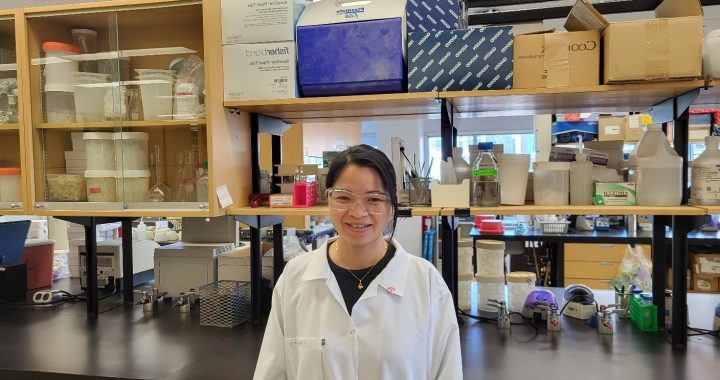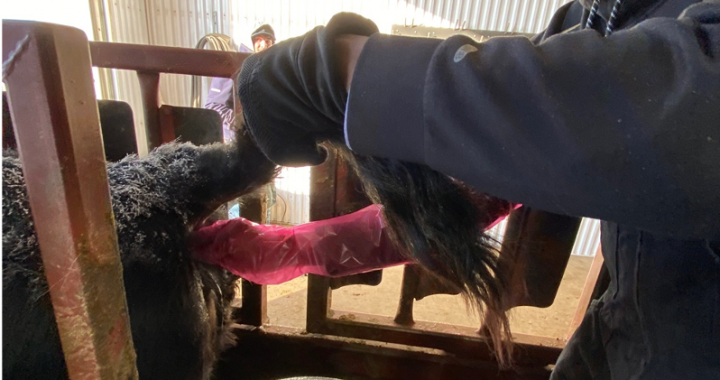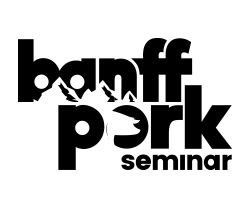Publications
Olson CA., Li C., Block HC, McKeown L., Fitzsimmons C., Plastow G., Basarab JA. 2024. Residual feed intake measured as replacement heifers is indicative of residual feed intake measured as mature cows. Can. J. Anim. Sci. 00: 1–9 (2024), dx.doi.org/10.1139/cjas-2024-0065
Khakbazan M., Olson CA., Block HC., Li C., Basarab JA. Effects of feed efficiency, longevity, cow’s hybrid vigour, and lifetime productivity on profitability of cow-calf operations in central Alberta. Can. J. Anim. Sci. 00: 1–9 (2024), dx.doi.org/10.1139/cjas-2024-0065
Li H., Wang Y., Vinsky M., Valente T., Basarab JA., Li C. Accuracy of genomic predictions using single and multiple-trait machine learning methods in Canadian beef cattle population. J Anim Sci., 102. Suppl., 3, 33–34, https://doi.org/10.1093/jas/skae234.037
Alipanah, M., Valente, T.S., Abo-Ismail, M.K., Plastow, G.S., Basarab, J.A., Crowley, J.J., Akanno, E.C. (2024) Accounting for non-additive genetic variation in carcass quality traits of Canadian beef cattle. Can. J. Animal Sci. 104 doi.org/10.1139/cjas-2024-0008
Virtuoso, M.C.S., Hosseini, A., Aalhus, J.L., Juárez, M., Bruce, H.L., Li, C., Basarab, J.A., Valente, T.S., Plastow, G. (2024) Genetic parameter estimates for sensory and meat quality traits measured at 3 and 29 days of aging of beef from Canadian crossbred cattle. Meat Sci. 207:109351 doi.org/10.1016/j.meatsci.2023.109351
Virtuoso, M.C.S., Aalhus, J.L., Juárez, M., López-Campos, O., Bruce, H.L., Li, C., Basarab, J.A., Plastow, G., Valente, T.S. (2024) Genetic parameters and genomic insights for meat colour traits of Canadian crossbred beef cattle. Can. J. Animal Sci.
Chitneedi, P.K., Hadlich, F., Moreira, G.C.M., Espinosa-Carrasco, J., Li, C., Plastow, G., Fischer, D., Charlier, C., Rocha, D., Chamberlain, A.J., Kuehn, C. (2024) eQTL-Detect: nextflow-based pipeline for eQTL detection in modular format with sharable and parallelizable scripts. NAR Genomics and Bioinformatics, lqae122 doi.org/10.1093/nargab/lqae122
Robic, A., Hadlich, F., Moreira, G.C.M., Clark, E.L., Plastow, G., Charlier, C., Kühn, C. (2024) Innovative construction of the first reliable catalogue of bovine circular RNAs. RNA Biology 21: 52–74. doi.org/10.1080/15476286.2024.2375090
Oliveira, H.R., Sweett, H., Narayana, S., Fleming, A., Shadpour, S., Malchiodi, F., Jamrozik, J., Kistemaker, G., Sullivan, P., Schenkel, F., Hailemariam, D., Stothard, P., Plastow, G., Van Doormaal, B., Lohuis, M., Shannon, J, Baes, C., Miglior, F. (2024) Symposium Review: Development of genomic evaluation for methane efficiency in Canadian Holsteins. JDS Communications published online January 2024 doi.org/10.3168/jdsc.2023-0431
van Staaveren, N., De Oliveira, H., Houlahan, K., Chud, T., Oliveira Junior, G., Hailemariam, D., Kistemaker, G., Miglior, F., Plastow, G., Schenkel, F., Cerri, R., Sirard, M.A., Stothard, P., Pryce, J., Butty, A., Stratz, P., Abdalla, E., Segelke, D., Stamer, E., Thaller, G., Lassen, J., Manzanilla-Pech, C., Stephansen, R., Charfeddine, N., García-Rodriguez, A., Gonzalez-Recio, O., López-Paredes, J., Baldwin, R., Buchard, J., Parker Gaddis, K., Koltes, J., Peñagaricano, F., Santos, J., Tempelman, R., VandeHaar, M., Weigel, K., White, H., Baes, C. (2024) The Resilient Dairy Genome Project – a general overview of methods and objectives related to feed efficiency and methane emissions. J. Dairy Sci. 107: 1510-1522.doi.org/10.3168/jds.2022-22951
Ko, H., Pasternak, J.A., Mulligan, M.K., Hamonic, G., Ramesh, N., MacPhee, D.J., Plastow, G.S., Harding, J.C.S. (2024) A DIO2 missense mutation and its impact on fetal response to PRRSV infection. BMC Veterinary Research 20:255 doi.org/10.1186/s12917-024-04099-4
Moroni, J.L., Tsoi, S., Wenger, I.I., Plastow, G.S., Dyck, M.K. (2024) Placental transcriptome analysis in connection with low litter birth weight phenotype (LBWP) sows. Genes 15(6):703 doi.org/10.3390/genes15060703
In the field
Our project: “Using genomic tools to reduce GHG & Methane in beef cattle” is ramping up, so the team–Gentec and collaborators– went out to Roy Berg Kinsella Research Ranch to learn how to operate the Greenfeed Emissions Monitoring equipment. This equipment measures the enteric greenhouse gas emissions from cattle. Animals put their head into the gas measurement shroud to receive feed pellets. The animal’s RFID is then read, and as they are feeding, the enteric gases (CH4, CO2, H2) and air are drawn up a sampling tube by positive air flow to an infrared sensor that quantifies gases. This enteric gas data will also provide a baseline for developing models for predicting enteric methane from fecal NIRs spectra. Some of the team also took in a web-based training to see how the data is collected, analyzed and reported by the C-lock software and analytics team. This latter aspect is an international collaboration with Belgian scientist Dr. Amélie Vanlierde with Walloon Agriculture Research Centre (CRA-W, Gembloux, Belgium) and French scientist Donato Andueza from The French National Research Institute for Agriculture, Food and Environment (INRAE).


Greenfeed Emissions Monitoring (GEM) system training session conducted by C-lock technician, on 29 Oct 2024 (left); Green Feed archived gas sensor data (right).




















